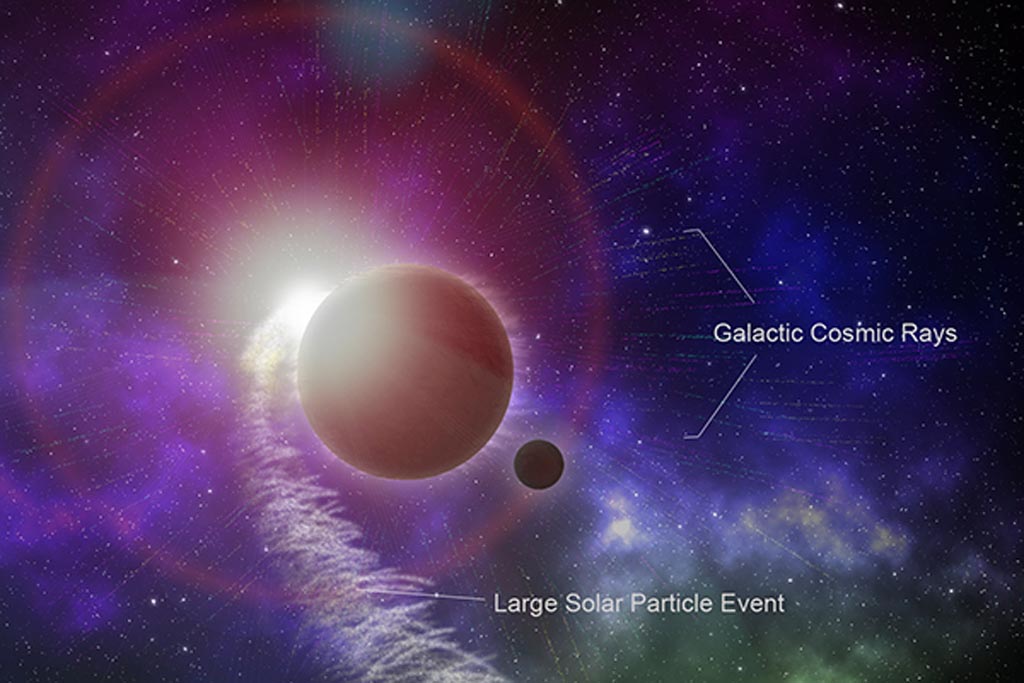Supercomputers Help Estimate Astronauts Radiation Risk
By MedImaging International staff writers
Posted on 19 Apr 2018
A new study reveals that a space vehicle with relatively minimal shielding and a high inclination polar orbit could expose astronauts to high exposures of cosmic radiation and solar particle events.Posted on 19 Apr 2018
Researchers at Texas A&M University (TAMU; College Station, TX, USA), the U.S. National Aeronautics and Space Administration (NASA; Houston, USA), and the Mayo Clinic Arizona (Scottsdale, USA) investigated potential radiation risks facing astronauts that would have operated the Manned Orbiting Laboratory (MOL), a mission planned by NASA in the 1960’s, but which never actually flew. Mission documents were recently declassified.

Image: GCRs and SPEs pose a significant threat to astronauts during space exploration (Photo courtesy of Rebecca Blue/ NASA).
The MOL was conceived as an experimental laboratory for human spaceflight, but was recast as a secret reconnaissance platform in 1965 during the height of the Cold War. The vehicle would have travelled in low-earth orbit and passed repeatedly over the northern and southern polar regions to better spy on the Soviet Union. In August 1972, three years after the MOL mission planning was discontinued due to the emergence of cheaper, unmanned satellites, the Earth experienced a historically large solar particle event. The researchers explored how typical radiation and a solar flare from would have impacted MOL pilots.
They focused on radiation from two sources: solar particle events (SPEs) and galactic cosmic rays (GCRs). The researchers first modeled the MOL's orbit profile, the space weather and geomagnetic forces from those years, and the particle and heavy ion transport that such a trajectory would have encountered. Then, using a supercomputer requiring 150,000 computational hours, they found that under normal conditions, the MOL crew would have endured 113.6 millisievert (mSv) to their skin and 41.6 mSv to blood forming organs during a 30-day flight, well within the exposure limits for NASA astronauts.
However, during the "worst-case scenario" of the 1972 solar storm, their skin would have been exposed to 1,770 mSv, while their organs would have experienced 451 mSv, toxic doses of radiation. Based on animal studies, they concluded that such exposure would have caused nausea, vomiting, fatigue, and possibly skin burns to crew. Without rapid instigation of medical countermeasures, the risks could have been even more severe, affecting both short and long-term human health. The study was published on April 4, 2018, in npj Microgravity.
“Given the intended future of human spaceflight, with efforts now to rapidly expand capabilities for human missions to the moon and Mars, there is a pressing need to improve upon the understanding of the space radiation risk,” said lead author Jeffery Chancellor, MSc, of the TAMU department of physics and astronomy. “I think the research will have a huge impact for commercial space flight. It gives some insight to people who are trying to come up with ideas for orbiting hotels, or to SpaceX or Virgin Galactic who want to do tourist flights, in terms of what they have to address in order to protect the crew and customers.”
Accelerated ions in cosmic radiation interact differently with objects and people. While X-rays can be blocked by lead shields, GCR ions can become more dangerous when interacting with metals, generating secondary particles that have biological effects, such as an accelerated development of atherosclerosis, rapid progression of advanced aortic root lesions, reduced lesional collagen, and intima media thickening of the carotid arteries. Space travel also affects other organs; the heart, for example, changes shape and becomes more spherical.
Related Links:
Texas A&M University
U.S. National Aeronautics and Space Administration
Mayo Clinic Arizona














